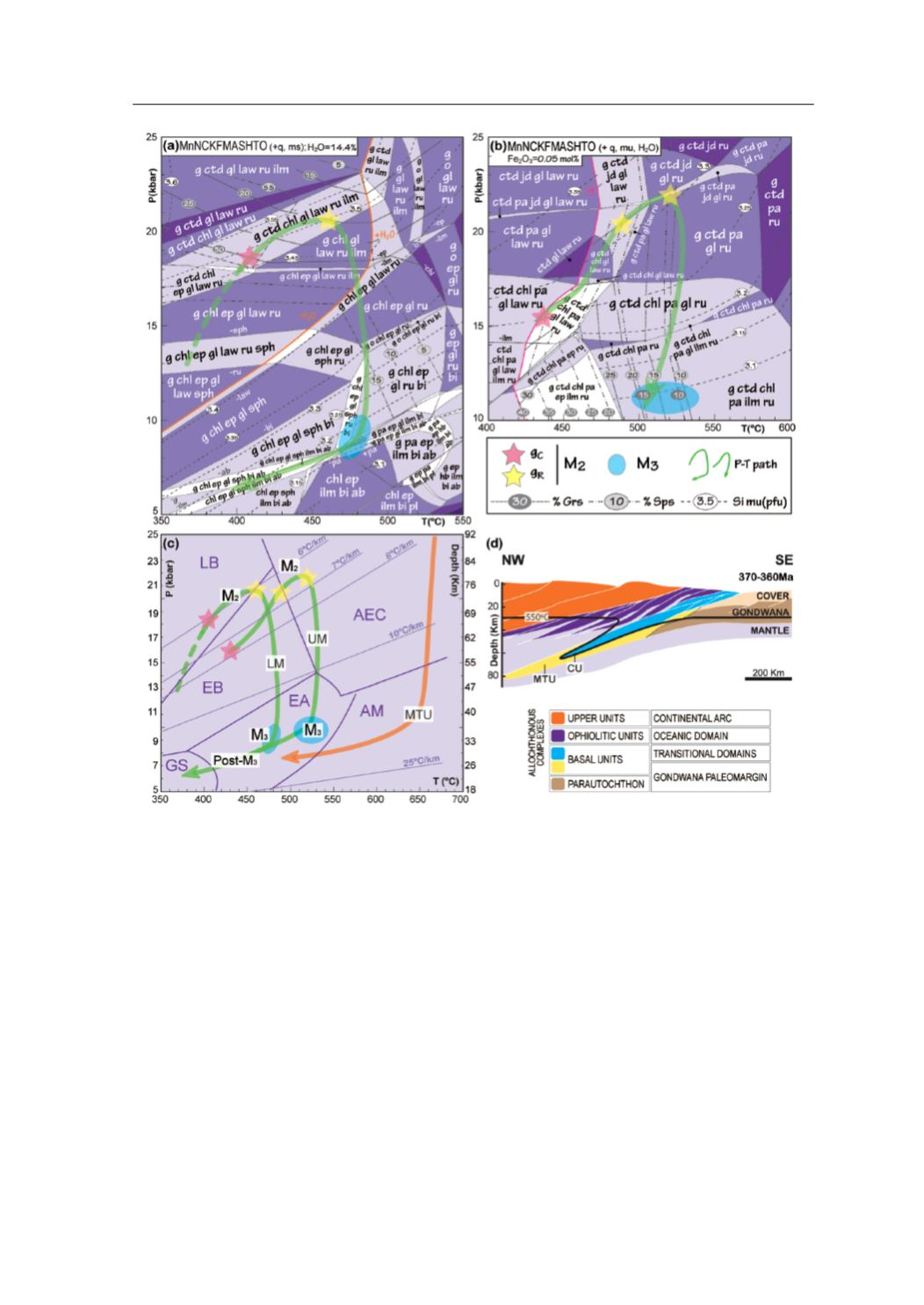
tectonostratigraphic units constituted by mafic
and ultramafic rocks, with little or no presence
of metasedimentary rocks, were interpreted as
ophiolites in the first descriptions of the terranes
included in the allochthonous complexes (Are-
nas
et al.
, 1986). Two groups of ophiolitic units
have been distinguised in Galicia (Arenas
et al.
,
2007a) (Fig. 2), which can be correlated with sim-
ilar types along the Variscan Orogen. The Upper
Ophiolitic Units have Devonian age and repre-
sent the most common group along the Variscan
Orogen (Murphy
et al.
, 2011). Devonian ophio-
lites exist in Cornwall (Lizard Ophiolite; Clark
et
al.
, 1998; Nutman
et al.
, 2001), Armorican Massif
(Drain Ophiolite; Ballèvre
et al.
, 2009, 2014) and
Bohemian Massif (Ślęża Ophiolite; Dubińska
et
29
3. GEOLOGICAL FRAMEWORK
Fig. 9.
Metamorphic evolution of the Ceán Unit. (
a
) P-T pseudosection calculated with Thermocalc for the lower meta-
pelites (LM): [SiO
2
:57.91; TiO
2
:0.76; Al
2
O
3
:10.11; FeO:6.76; O:0.53; MnO:0.02; MgO:4.38; CaO:2.77; Na
2
O:1.23; K
2
O:2.95;
H
2
O:14.40]. (
b
) P-T pseudosection calculated with Thermocalc for the upper metapelites (UM): [SiO
2
:69.21; TiO
2
:0.67;
Al
2
O
3
:14.82; FeO:7.75; O:0.05; MnO:0.26; MgO:3.08; CaO:0.24; Na
2
O:0.99; K
2
O:2.93; H
2
O in excess]. (
c
) P-T diagram
showing the metamorphic paths of the Ceán Unit (LM and UM) and the Malpica-Tui Unit (MTU). Modified from
López-Carmona
et al.
(2013). Metamorphic facies field abbreviations: GS, greenschist facies; EA, epidote, amphibolite fa-
cies; AM, amphibolite facies; LB, lawsonite blueschist facies; EB, epidote blueschist facies and AEC, amphibole–eclogite
facies. After Evans (1990) and Maruyama
et al.
(1996). (
d
) Schematic cross-section of the subduction zone operating in the
NW Iberian Massif at
c.
372 Ma. Modified from Martínez Catalán
et al.
(1996); Arenas
et al.
(1997) and López-Carmona
et
al.
(2013).








